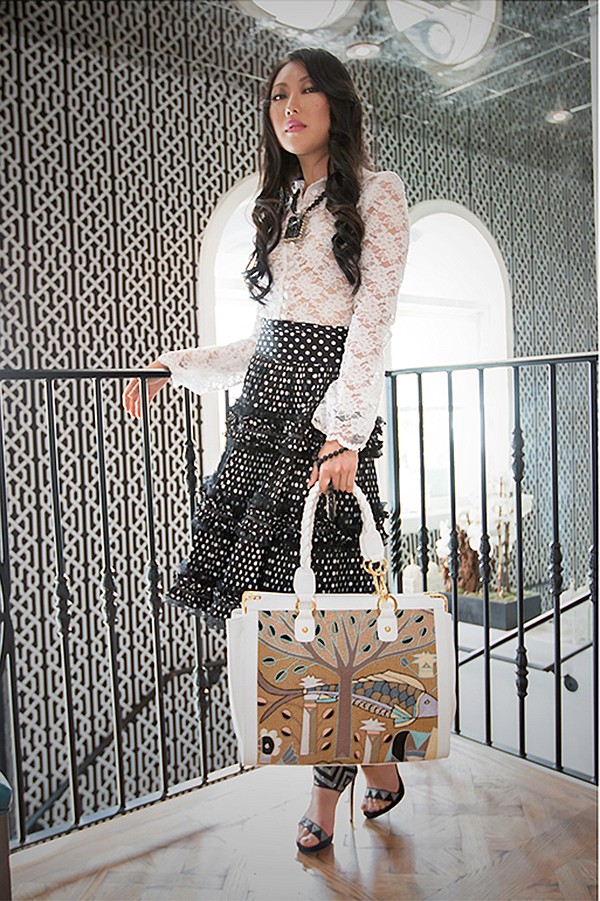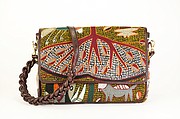FASHION
Sourcing From Global Artists, Malena Ruth Empowers Others With Her Brand
Global inspiration is at the heart of the Mozambique-born, Los Angeles–based designer Malena Ruth. Her eponymous brand has encountered an issue within fashion that she hopes will re-center the appropriation by Western designers into an appreciation for the communities from which they take their inspiration. Now, as she celebrates her 10-year anniversary, Ruth is sharing her story of giving back.
“Major designers, if you dig deep into their collections, you will find traces of Africa. If I recognize a pattern [in a Western collection], I can say, this is inspired by the Bambara people of Mali, or this is inspired by the Maasai,” she said. “My question was always, ‘Are these communities benefiting from this? The reality is no, they are not.”
Through establishing connections with cooperatives in Africa and, now, Guatemala—a major apparel-manufacturing hub—Ruth purchases fabrics from residents of communities that are impoverished but filled with creative potential. She then creates handbags in Boyle Heights and apparel in downtown Los Angeles, showcasing finished pieces via Instagram @malenaruth_.
“Today, manufacturing in the U.S. is becoming the ‘it’ thing. Here in L.A. we have so many people who are talented and we can use them to make things,” she said. “I want to walk into that factory and feel comfortable. The only way I could do that is making it here, going to the factory, sitting there and knowing it’s a good place that I can be proud of.”
In addition to purchasing the fabrics outright rather than simply copying the designs, Ruth also contributes an additional 10 percent to 20 percent of her net profit to reinvest in the communities where the artists live. While Ruth loves designing bags and garments, her passion is elevating young girls from communities in countries such as Mozambique, South Africa and Tanzania.
“If they give credit to where their inspiration is coming from, it will not only make them succeed but they will also empower the people from where the inspiration came from,” she explained. “This world is intertwined; we are all interconnected in some way. By doing that, they will lend humanity to their own designs.”
From Africa, she chooses wovens and embroidered fabrics. Through a cooperative in Mali she is looking forward to sourcing more wovens and is working with artists to create a look that will be more popular in the West. Her Guatemalan fabric is sourced through an organization that assists women in the region who are fleeing domestic violence.
“The nonprofit works with women who are refugees from domestic violence and gang violence. They were looking for a way to raise funds,” she explained. “They sent some samples to me, and I knew I could create something out of it. I use their weaving and create these elegant handbags.”
By incorporating the work of these women who are facing dangerous challenges, Ruth can emphasize her point, lending a hand-up rather than a handout. The beautiful work of these women, which has traditionally been either appropriated or simply bought by tourists for much less than they are worth, is now showcased in Ruth’s luxury handbags. Her creations couple the fabrics from these communities with Italian leather and hardware.
“How can we take them from begging for your dollar to you wanting to buy their wares?” she said. “In those communities, everything is done by hand.”
Retail price points for Ruth’s brand range from $125 for a clutch to travel bags for $4,500, while garments range from $95 for a tank top to $3,600 for a gown. Garment sizing ranges from 4–14 in addition to a big-and-tall line that Ruth designs for women who wear sizes 18–24.
A self-described perfectionist, Ruth recognizes that her work will not only be a reflection of her brand but also her partners abroad who are working toward building a better life. It is the foundation upon which her brand was launched when she started 10 years ago working with mud cloth from Mali, eventually sourcing embroidered fabrics from South Africa.
“It’s not just about me. It’s about all the makers,” she said. “I always think, ‘I can do better than that,’ so I always have more than one, so I come up with six or seven designs. That is how I started.”
In addition to working through her African Millennium Foundation, Ruth brings children from places such as Kenya and Tanzania to study in the United States. She is also working to produce Los Angeles–based events to showcase African and Guatemalan creatives. Through this event, she hopes to reinvest in children’s education in these communities.
“My vision for the future is to work with different co-ops from around the globe, especially from developing countries, and bring other designers onboard for them to source directly from those communities and have the [artists] benefit from all that we see here in the magazines,” she said. “It doesn’t take much. They don’t need much. If other designers come onboard, we will help elevate a community of girls and send them to school, giving them a chance for a better life.”























